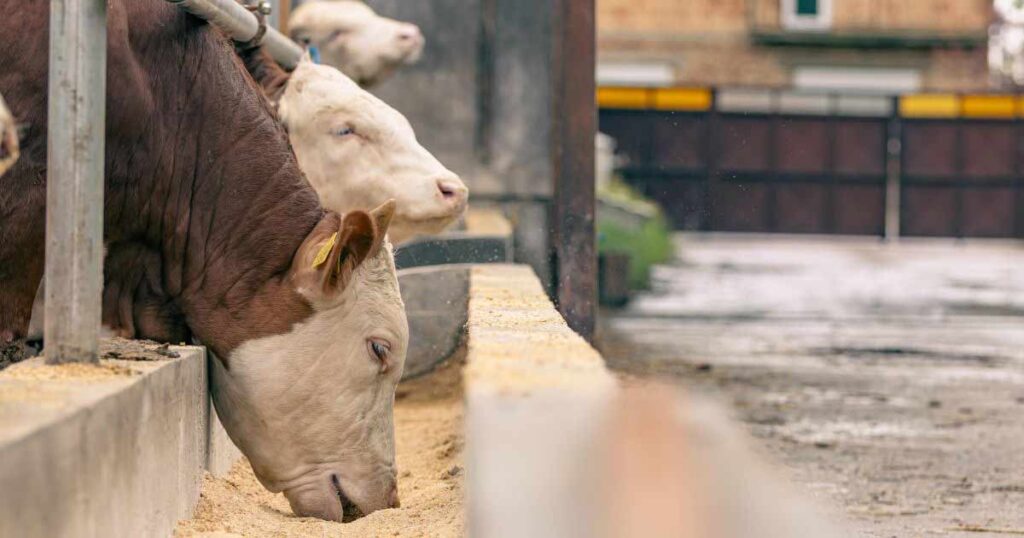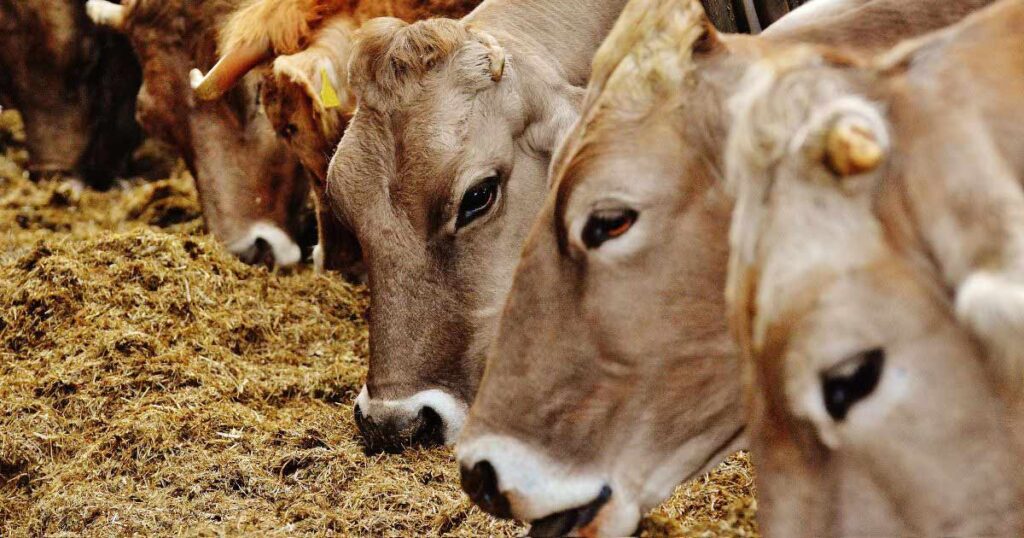Starting a cow farm with a limited budget requires strategic planning and resourceful execution. Whether you are a beginner or an experienced farmer looking to minimize costs, a well-thought-out approach can make your venture profitable. In this comprehensive guide, we will cover everything you need to know to start a successful cow farm with minimal investment.

1. Planning and Research
Before starting a cow farm, thorough research and planning are essential. Consider the following factors:
- Market Analysis: Understand the demand for dairy or meat products in your area.
- Budget Estimation: Determine the costs associated with land, cows, feed, and labor.
- Legal Requirements: Research permits, licenses, and regulations for cow farming in your region.
- Farm Location: Choose a location with ample space, good road access, and proximity to the market.
2. Selecting the Right Cow Breed
Choosing the right breed of cows is crucial for maximizing profits. Some cost-effective breeds include:
- Dairy Breeds: Jersey, Holstein Friesian, Gir, Sahiwal
- Meat Breeds: Angus, Hereford, Limousin
- Dual-Purpose Breeds: Red Sindhi, Tharparkar, Simmental
Select breeds based on climate adaptability, feed efficiency, and market demand.
3. Acquiring Land and Infrastructure
A small cow farm can start with 1-2 acres of land. Key infrastructure requirements include:
- Shelter: Construct low-cost sheds using locally available materials.
- Fencing: Use wooden or wire fencing to secure the farm.
- Water Supply: Ensure a clean and reliable water source.
- Storage Area: Allocate space for feed, equipment, and manure disposal.
4. Procuring Cows at Low Cost
To reduce initial investment, consider:
- Buying Young Heifers: They are cheaper than mature cows.
- Local Breeds: Indigenous cows are affordable and adapt well to local conditions.
- Government Schemes: Check for subsidies and financial aid for small farmers.
5. Feeding and Nutrition Management
Feed accounts for a significant portion of expenses. Low-cost feeding strategies include:
- Green Fodder: Grow your own grass, maize, or napier grass.
- Agricultural Byproducts: Use husk, bran, and vegetable waste as supplementary feed.
- Silage and Hay Making: Store excess fodder for non-growing seasons.
6. Health and Disease Management
A healthy cow ensures higher productivity. Key aspects include:
- Regular Vaccination: Protect cows from common diseases.
- Deworming: Prevent internal and external parasites.
- Hygiene Maintenance: Clean sheds regularly to prevent infections.
7. Milking and Milk Processing
For a dairy farm, proper milking techniques improve yield and quality. Consider:
- Hand Milking vs. Machine Milking: Hand milking is cheaper but time-consuming.
- Milk Storage: Use cooling tanks or traditional earthen pots for storage.
- Value Addition: Convert milk into yogurt, cheese, or butter to increase profits.
8. Marketing and Sales Strategy
A strong marketing strategy ensures steady income. Cost-effective marketing ideas include:
- Local Market Selling: Sell directly to consumers or local dairy cooperatives.
- Online Sales: Use social media and e-commerce platforms.
- Bulk Selling: Partner with restaurants, hotels, and dairy processing units.
9. Waste Management and Sustainability
Cow farms produce waste that can be utilized efficiently:
- Manure for Fertilizer: Sell or use cow dung as organic fertilizer.
- Biogas Production: Convert waste into biogas for energy use.
- Water Recycling: Implement rainwater harvesting for sustainability.
10. Financial Assistance and Loan Options
If you need additional funding, explore:
- Government Subsidies: Many regions offer financial support for small farmers.
- Microfinance Loans: Consider local banks or cooperative lending options.
- Crowdfunding: Raise capital through online platforms.
General investment in animal husbandry
Investing in cows, or livestock in general, can be a complex issue with potential benefits and risks. Here’s a breakdown of factors to consider:
Potential Benefits:
- Demand for Products:
- There’s a consistent demand for beef and dairy products, driven by global population growth.
- This demand can create a stable market for livestock products.
- Inflation Hedge:
- Livestock prices can sometimes rise with inflation, acting as a hedge against the decreasing value of currency.
- Diversification:
- Livestock can diversify an investment portfolio, reducing reliance on stocks and bonds.
- Tangible Asset:
- Unlike some investments, livestock is a physical asset with inherent value.
Potential Risks:
- Market Volatility:
- Livestock prices can fluctuate due to factors like feed costs, weather conditions, and disease outbreaks.
- Disease:
- Outbreaks of diseases like bovine spongiform encephalopathy (BSE) can significantly impact the market.
- Environmental Concerns:
- Livestock farming can have environmental impacts, which may lead to increased regulations and costs.
- Feed Costs:
- The cost of feed can greatly fluctuate, and have a large impact on profitability.
- Labor and upkeep:
- Raising cattle requires labor, and infrastructure, which creates added costs.
Important Considerations
- Market Research: Thoroughly research local and global market trends, including demand, supply, and pricing.
- Risk Management: Develop strategies to mitigate risks, such as disease prevention and feed cost management.
- Financial Planning: Carefully assess your financial resources and ensure you can handle potential losses.
- Local Regulations: be sure to understand all local regulations regarding livestock.
Regarding CoW Protocol
It is important to note that when searching, “cow” can also refer to “CoW Protocol” which is a decentralized trading protocol. This is a very different type of “investment” than investing in live cattle. If you are interested in cryptocurrency investments, those carry their own very high risk, and require extensive research.
In conclusion, investing in cows can be a viable option, but it’s essential to conduct thorough research and carefully consider the potential risks and rewards.

Cow farm business plan
Creating a comprehensive cow farm business plan is crucial for success. Will provide a brief guide on how to create a cattle farm business plan that can lead to success.
1. Executive Summary:
- A brief overview of your business, its mission, and goals.
- Highlight key financial projections and your competitive advantage.
2. Company Description:
- Detail your business structure (sole proprietorship, partnership, etc.).
- Describe your farm’s location, size, and facilities.
- State your mission and values.
3. Market Analysis:
- Target Market: Identify your target customers (e.g., dairy processors, meat packers, direct consumers).
- Market Trends: Research current market demands, pricing, and industry trends.
- Competition: Analyze the strengths and weaknesses of your competitors, which is good for you.
- SWOT Analysis: Conduct a SWOT analysis (Strengths, Weaknesses, Opportunities, Threats).
4. Products and Services:
- Clearly define what you will produce (e.g., milk, beef, breeding stock).
- Describe the quality and characteristics of your products.
- If applicable, include any value-added products (e.g., processed dairy products).
5. Marketing and Sales Strategy:
- Outline your marketing plan to reach your target customers.
- Describe your sales strategy (e.g., direct sales, contracts with processors).
- Consider online marketing, local farmers’ markets, and other promotional activities.
6. Management Team:
- Introduce your management team and their experience.
- Define roles and responsibilities.
- If applicable, include an organizational chart.
7. Operations Plan:
- Livestock Management: Detail your breeding, feeding, and healthcare practices.
- Facilities and Equipment: Describe your farm’s facilities and equipment.
- Feed and Supplies: Outline your sourcing strategy for feed, supplies, and other inputs.
- Waste Management: Describe your plan for managing manure and other waste.
- Biosecurity: Implement a plan to prevent disease.
8. Financial Plan:
- Startup Costs: List all initial expenses (e.g., land, livestock, equipment).
- Operating Expenses: Project your ongoing expenses (e.g., feed, labor, utilities).
- Revenue Projections: Forecast your sales revenue.
- Cash Flow Projections: Project your cash flow over a specific period.
- Profit and Loss Projections: Create projected income statements.
- Funding Request (if applicable): If seeking funding, clearly state the amount requested and how it will be used.
Key Considerations
- Regulations: Research and comply with all local, state, and federal regulations.
- Sustainability: Consider implementing sustainable farming practices.
- Record Keeping: Maintain accurate records of all financial and operational activities.
- Risk Management: Develop strategies to mitigate potential risks (e.g., disease, weather, market fluctuations).
Where to find help
- Local agricultural extension offices.
- Small Business Administration (SBA).
- Online resources and templates.
By thoroughly addressing these components, you can create a robust business plan that will increase your chances of success in the cow farm industry.
What are the common diseases affecting cows, and how can they be prevented?
Cattle are susceptible to a range of diseases, which can significantly impact farm productivity and profitability. Here’s an overview of some common diseases and their prevention:
Common Cattle Diseases
- Bovine Respiratory Disease (BRD):
- This is a complex of respiratory infections, often triggered by stress.
- These symptoms include cough, fever, and shortness of breath.
- Mastitis:
- An inflammation of the mammary gland, commonly affecting dairy cows.
- Signs include swollen udders and abnormal milk.
- Bovine Viral Diarrhea (BVD):
- A viral infection that can cause respiratory issues, reproductive problems, and immunosuppression.
- Johne’s Disease:
- A chronic intestinal infection causing diarrhea and weight loss.
- Foot-and-Mouth Disease (FMD):
- It is a highly contagious viral disease that causes fever and blisters on the face and feet.
- Leptospirosis:
- A bacterial disease that can cause reproductive problems and affect the kidneys.
- Bovine Tuberculosis (TB):
- A chronic disease that can affect the lungs and other organs.
- Bloat:
- This is a build up of gas in the rumen, that if severe enough can cause death.
- Calf Scours (Diarrhea):
- This is a very common ailment in young calves, and can be caused by many different pathogens.
Disease Prevention
- Vaccinations:
- Regular vaccinations are crucial for protecting cattle against many diseases.
- Biosecurity:
- Implement proper strict biosecurity measures, such as:
- Quarantine new animals at the beginning.
- Always control access to the farm.
- Maintain clean and tidy facilities on the farm.
- Finally, implement proper sanitation measures.
- Implement proper strict biosecurity measures, such as:
- Proper Nutrition:
- Ensure cattle receive a balanced diet to maintain a strong immune system.
- Stress Management:
- Minimize stress through proper handling and adequate space.
- Regular Veterinary Checkups:
- Routine checkups can help detect and address health issues early.
- Hygiene:
- Maintaining clean bedding, and living areas helps to prevent disease spread.
- Parasite Control:
- Internal and external parasites can weaken cattle, making them more susceptible to disease. Regular parasite control is essential.
- Good record keeping:
- Keeping accurate records of animal health, and treatments, is very important.
Important Note
- Always consult with a veterinarian for specific disease prevention and treatment recommendations.
By implementing these preventive measures, you can significantly reduce the risk of diseases in your cattle herd.
FAQs
How much initial investment is required to start a cow farm?
The investment depends on the number of cows, land, and infrastructure. A small farm with 2-5 cows may require $2,000 – $10,000.
What are the best low-cost feed options for cows?
Green fodder, agricultural byproducts, silage, and hay are cost-effective feeding options.
How can I increase the profitability of my cow farm?
By reducing feed costs, improving cow health, value-adding dairy products, and adopting efficient marketing strategies.
Is it possible to start a cow farm without owning land?
Yes, you can lease land or adopt a contract farming model.
Conclusion
Starting a cow farm with low investment is possible with careful planning and resource optimization. By selecting the right breed, minimizing feed costs, maintaining cow health, and implementing smart marketing strategies, you can build a profitable and sustainable cow farming business. Whether you aim for dairy or meat production, following these guidelines will ensure success with minimal financial risk.
